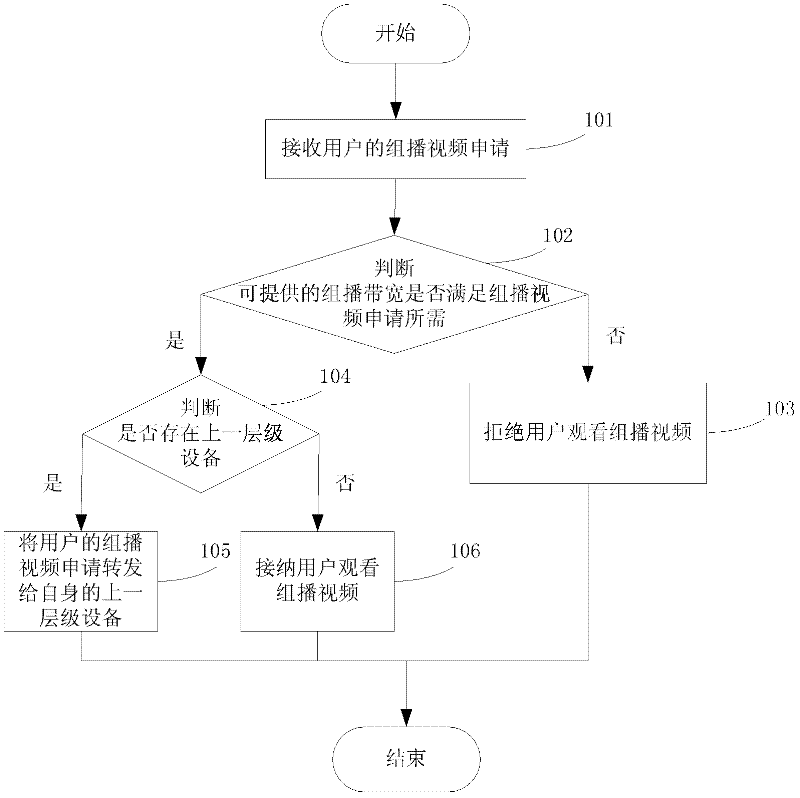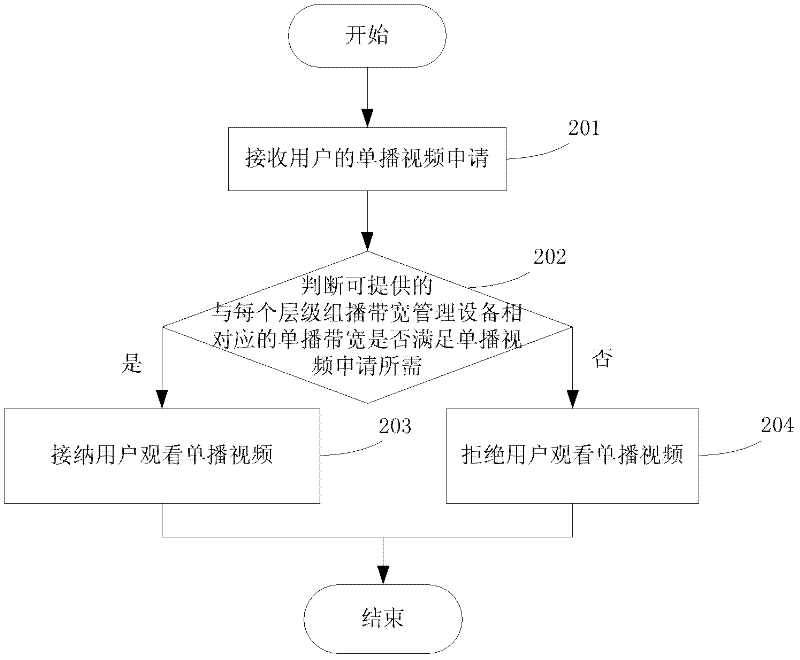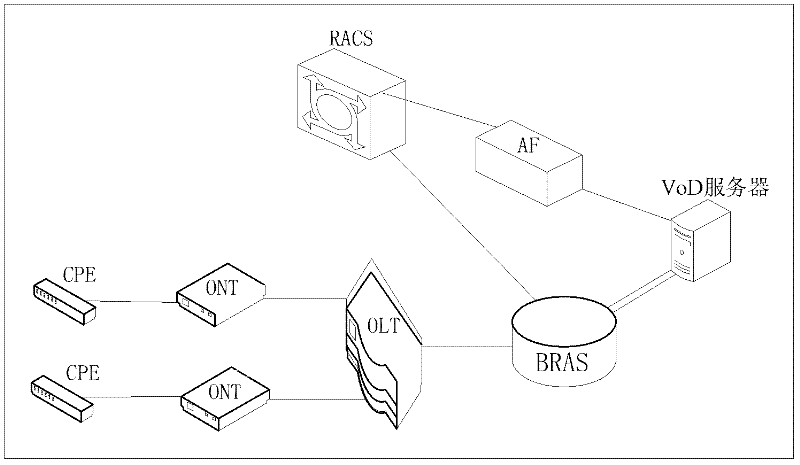Method, system and equipment for admission control
An admission control and equipment technology, applied in the field of communications, can solve the problems of low bandwidth utilization, insufficient unicast bandwidth, and can not fully meet the needs of operators' bandwidth negotiation, so as to improve the utilization rate and meet the needs of bandwidth adjustment. Effect
- Summary
- Abstract
- Description
- Claims
- Application Information
AI Technical Summary
Problems solved by technology
Method used
Image
Examples
Embodiment 1
[0070] This embodiment provides an admission control method, which divides multiple multicast bandwidth management devices into different levels according to different bandwidth control granularities. When a user applies for multicast video, refer to figure 1 , the method flow is as follows:
[0071] 101: The multicast bandwidth management device receives the user's multicast video application;
[0072] 102: Determine whether the available multicast bandwidth meets the requirements of the multicast video application; if not, execute 103; otherwise, execute 104;
[0073] 103: The user is refused to watch the multicast video, and the process ends;
[0074] 104: Determine whether there is an upper-level device, if yes, execute 105, otherwise, execute 106;
[0075] 105: Forward the user's multicast video application to the upper-level device, and the upper-level device decides whether to accept the user to watch the multicast video, and the process ends;
[0076] 106: Accept th...
Embodiment 2
[0084] This embodiment provides an admission control method, which divides multiple multicast bandwidth management devices into different levels according to different bandwidth control granularities. This method is aimed at FTTH (Fiber To The Home, Fiber To The Home) application scenarios. The broadcast bandwidth management device is RACS, and the multicast bandwidth management device is OLT (Optical Line Terminal, optical line terminal); For a detailed description of the method, see image 3 , when the user goes online, the OLT reports the user line ID (Identifier, identifier) to the BRAS (Broadband Remote Access Server, Broadband Remote Access Server), and the BRAS forwards the received line ID to the RACS. Among them, the message of the line ID is defined as:
[0085] ANID xpon Frame_ID / Slot_ID / Sub-Slot_ID / Port_ID: ONT_ID.GemPort_ID.VLAN_ID; among them, ANID indicates the ID of the OLT; xpon indicates that this is the PON (Passive Optical Network, Passive Optical Networ...
Embodiment 3
[0098] This embodiment provides an admission control method. In order to further explain the method, for the FTTH application scenario, this embodiment will combine several different situations in the first-level bandwidth negotiation scenario to make a detailed description of the method provided in this embodiment. Detailed explanation.
[0099] see Figure 5 , taking the first-level bandwidth negotiation scenario, when the user applies for unicast video, the RACS bandwidth for managing unicast bandwidth is sufficient, and there is no need to borrow bandwidth as an example. The process is as follows:
[0100] 501: The user sends a unicast video request to the VoD server;
[0101] 502: the VoD server applies for unicast bandwidth from the AF;
[0102] 503: AF applies for unicast bandwidth from RACS;
[0103] 504: RACS judges whether there is enough remaining unicast bandwidth—the result is that there is enough remaining unicast bandwidth;
[0104] 505: RACS allocates unica...
PUM
 Login to View More
Login to View More Abstract
Description
Claims
Application Information
 Login to View More
Login to View More - R&D
- Intellectual Property
- Life Sciences
- Materials
- Tech Scout
- Unparalleled Data Quality
- Higher Quality Content
- 60% Fewer Hallucinations
Browse by: Latest US Patents, China's latest patents, Technical Efficacy Thesaurus, Application Domain, Technology Topic, Popular Technical Reports.
© 2025 PatSnap. All rights reserved.Legal|Privacy policy|Modern Slavery Act Transparency Statement|Sitemap|About US| Contact US: help@patsnap.com



